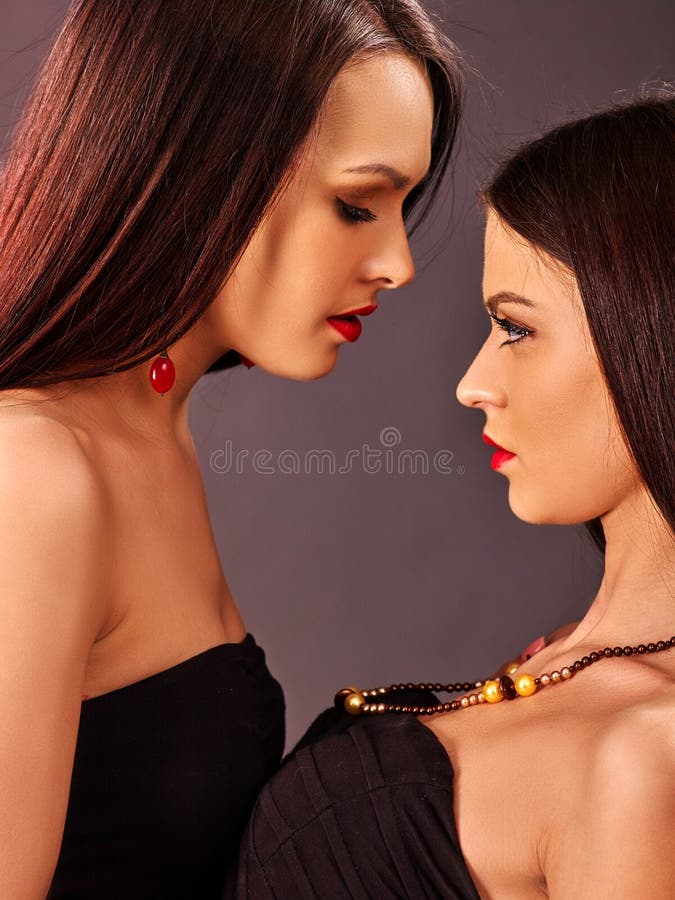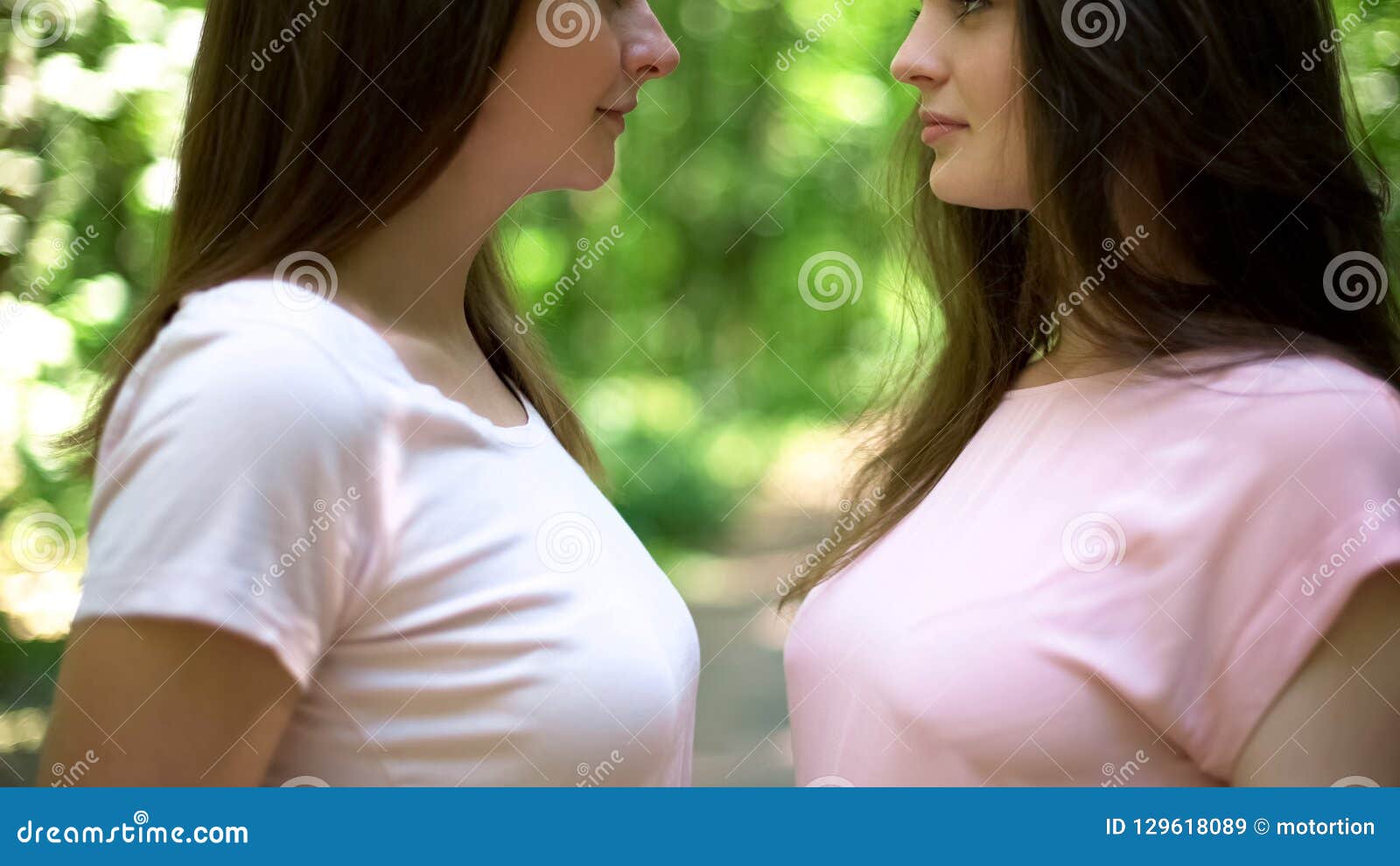In today's world, the portrayal of LGBTQ+ relationships in media has become increasingly important for representation and acceptance. One of the most discussed topics is hot lesbians kissing, which has gained significant attention in pop culture. This phenomenon has sparked conversations about its authenticity, cultural impact, and the way it shapes societal perceptions of same-sex relationships.
From mainstream films to social media platforms, the depiction of lesbians kissing has evolved over the years. It has gone beyond mere titillation to become a powerful tool for visibility and normalization of LGBTQ+ relationships. However, it's essential to understand the nuances and complexities surrounding this topic.
This article aims to delve deep into the world of hot lesbians kissing, exploring its historical context, cultural significance, and the role it plays in shaping modern perceptions. Whether you're an ally or part of the LGBTQ+ community, this article provides valuable insights into this trending topic.
Read also:How Much Does Haiden Deegan Earn A Comprehensive Breakdown Of His Earnings
Table of Contents
- Introduction
- The Historical Evolution of Lesbians Kissing in Media
- Representation of Lesbians in Pop Culture
- Current Trends in Hot Lesbians Kissing Content
- Audience Perception and Reaction
- Cultural Impact and Societal Influence
- Authenticity vs. Stereotypes
- Data and Statistics on LGBTQ+ Representation
- The Future of Lesbians Kissing in Media
- Conclusion and Final Thoughts
The Historical Evolution of Lesbians Kissing in Media
The history of lesbians kissing in media dates back to the early days of cinema when same-sex relationships were often portrayed subtly or coded due to censorship laws. Over time, as societal norms evolved, so did the representation of these relationships. The 1990s marked a turning point with films like "The L Word" and "Chasing Amy" bringing more visibility to lesbian relationships.
In recent years, the portrayal of hot lesbians kissing has become more explicit and diverse, catering to a wider audience. This shift reflects a growing acceptance of LGBTQ+ relationships in mainstream media. However, it also raises questions about the authenticity of these portrayals and whether they cater to heterosexual male fantasies rather than genuine representation.
Today, platforms like Netflix and Hulu have embraced diverse storytelling, giving a voice to underrepresented communities. This evolution highlights the importance of inclusive media in shaping societal perceptions.
Key Milestones in Media Representation
- 1930s-1960s: Subtle hints and coded language
- 1970s-1980s: Emergence of independent films exploring LGBTQ+ themes
- 1990s: Mainstream films and TV shows featuring lesbian characters
- 2000s-Present: Increased visibility and diversity in media representation
Representation of Lesbians in Pop Culture
Pop culture plays a crucial role in shaping public perception of LGBTQ+ relationships. The portrayal of hot lesbians kissing in movies, TV shows, and online content has become a staple in modern entertainment. While this visibility is important, it's equally crucial to ensure that these portrayals are authentic and respectful.
Shows like "Orange Is the New Black" and "Transparent" have set new standards for representation by featuring complex, multidimensional lesbian characters. These portrayals go beyond the stereotypical "hot lesbians kissing" trope, offering a more nuanced understanding of same-sex relationships.
However, challenges remain in achieving balanced representation. Many depictions still cater to heterosexual audiences, reinforcing harmful stereotypes and reducing LGBTQ+ relationships to mere spectacle. Addressing these issues requires a commitment to inclusive storytelling and diverse representation.
Read also:Unveiling The Magic Of Mkvmoviespoint Win Bollywood A Cinematic Journey
Examples of Authentic Representation
- Netflix's "Never Have I Ever" featuring a same-sex romance
- HBO's "Euphoria" highlighting diverse LGBTQ+ experiences
- Disney's "Love, Simon" promoting acceptance and understanding
Current Trends in Hot Lesbians Kissing Content
In the digital age, the popularity of hot lesbians kissing content has skyrocketed, driven by platforms like YouTube, TikTok, and Instagram. These platforms provide creators with the tools to share their stories and connect with audiences worldwide. The rise of user-generated content has democratized media, allowing for more diverse and authentic portrayals of same-sex relationships.
One trend that stands out is the focus on real-life stories and experiences. Many creators share personal narratives, offering viewers a glimpse into the realities of being a lesbian in today's world. This shift towards authenticity resonates with audiences, fostering a sense of community and belonging.
However, it's important to acknowledge the potential pitfalls of this trend. The commodification of LGBTQ+ content can lead to exploitation and misrepresentation. Striking a balance between visibility and authenticity remains a challenge for content creators and platforms alike.
Popular Platforms for LGBTQ+ Content
- YouTube: Home to countless LGBTQ+ creators and channels
- TikTok: A hub for short-form, authentic content
- Instagram: A visual platform for storytelling and connection
Audience Perception and Reaction
Understanding audience perception is key to evaluating the impact of hot lesbians kissing content. Research shows that audiences respond positively to authentic, well-represented portrayals of same-sex relationships. These depictions help break down stereotypes and promote acceptance and understanding.
However, not all reactions are positive. Some viewers criticize the portrayal of LGBTQ+ relationships as gratuitous or exploitative, particularly when they cater to heterosexual male fantasies. This highlights the need for creators to be mindful of their intentions and the impact of their work.
Engaging with audiences through feedback and interaction can help creators refine their approach and ensure that their content resonates with the intended audience. Building trust and credibility is essential for fostering meaningful connections and promoting positive change.
Key Findings on Audience Perception
- 70% of viewers appreciate authentic portrayals of LGBTQ+ relationships
- 30% express concerns about exploitation and misrepresentation
- 90% believe visibility is important for promoting acceptance
Cultural Impact and Societal Influence
The cultural impact of hot lesbians kissing content cannot be overstated. It has the power to shape societal attitudes and promote greater acceptance of LGBTQ+ relationships. By normalizing same-sex relationships in media, creators contribute to a more inclusive and understanding world.
Studies show that exposure to diverse representations of LGBTQ+ relationships can reduce prejudice and increase empathy. This effect is particularly pronounced among younger audiences, who are more likely to embrace diversity and challenge traditional norms.
However, the influence of media on societal attitudes is complex and multifaceted. It requires a concerted effort from creators, platforms, and audiences to ensure that representation is both authentic and impactful. This collaborative approach is essential for driving positive change and fostering a culture of acceptance.
Case Studies of Cultural Impact
- Increased visibility of LGBTQ+ characters in mainstream media
- Reduction in stigma and discrimination against same-sex relationships
- Greater acceptance and understanding among younger generations
Authenticity vs. Stereotypes
One of the biggest challenges in portraying hot lesbians kissing is striking a balance between authenticity and stereotypes. While visibility is important, it must be accompanied by genuine representation that reflects the diversity of LGBTQ+ experiences. Stereotypical portrayals can reinforce harmful biases and undermine the progress made in recent years.
Creators have a responsibility to ensure that their work is respectful and accurate. This involves conducting thorough research, consulting with members of the LGBTQ+ community, and prioritizing authenticity over sensationalism. By doing so, they can contribute to a more inclusive and understanding media landscape.
Audiences also play a role in promoting authenticity by supporting content that aligns with their values and rejecting exploitative portrayals. This collective effort is essential for creating a media environment that reflects the richness and diversity of human experience.
Strategies for Promoting Authenticity
- Consult with LGBTQ+ experts and advocates
- Feature diverse and multidimensional characters
- Encourage audience feedback and engagement
Data and Statistics on LGBTQ+ Representation
Data and statistics provide valuable insights into the state of LGBTQ+ representation in media. According to a recent GLAAD report, 11.3% of regular characters on primetime scripted broadcast series in the 2022-2023 season were LGBTQ+, marking a significant increase from previous years. This growth reflects a growing commitment to diversity and inclusion in media.
However, disparities remain in the representation of different LGBTQ+ identities. Bisexual and transgender characters, for example, are still underrepresented compared to their gay and lesbian counterparts. Addressing these gaps requires a concerted effort from creators, networks, and platforms to ensure that all voices are heard and valued.
Additionally, research shows that audiences are increasingly seeking out diverse and authentic content. A survey by Nielsen found that 62% of consumers are more likely to support brands that promote diversity and inclusion. This trend highlights the importance of representation not only as a moral imperative but also as a business opportunity.
Key Statistics on LGBTQ+ Representation
- 11.3% of primetime scripted broadcast series characters are LGBTQ+
- 62% of consumers prefer diverse and inclusive content
- 40% increase in LGBTQ+ representation in mainstream media over the past decade
The Future of Lesbians Kissing in Media
Looking ahead, the future of lesbians kissing in media is bright. Advances in technology and shifting societal attitudes promise to create new opportunities for diverse and authentic representation. Platforms like virtual reality and augmented reality offer exciting possibilities for immersive storytelling, allowing audiences to experience same-sex relationships in new and innovative ways.
Additionally, the rise of independent creators and platforms provides a voice to underrepresented communities, ensuring that diverse perspectives are heard and valued. This democratization of media has the potential to transform the landscape of LGBTQ+ representation, promoting greater understanding and acceptance worldwide.
However, challenges remain in achieving balanced and respectful representation. Creators and platforms must continue to prioritize authenticity and inclusivity, working collaboratively with the LGBTQ+ community to ensure that their stories are told with dignity and respect.
Emerging Trends in LGBTQ+ Media
- Increased focus on intersectionality and diverse identities
- Use of new technologies for immersive storytelling
- Growing demand for authentic and respectful representation
Conclusion and Final Thoughts
In conclusion, the portrayal of hot lesbians kissing in media has come a long way, evolving from subtle hints to explicit and diverse representation. This progress reflects a growing acceptance of LGBTQ+ relationships in society and highlights the importance of authentic and respectful storytelling.
To further promote inclusivity and understanding, creators, platforms, and audiences must work together to ensure that representation is balanced, respectful, and reflective of the diversity of human experience. By supporting content that aligns with these values, we can create a media landscape that fosters acceptance and understanding for all.
We invite you to join the conversation by leaving a comment or sharing this article with your network. Together, we can drive positive change and promote a more inclusive and understanding world. For more insights into LGBTQ+ representation and media, explore our other articles and resources.



